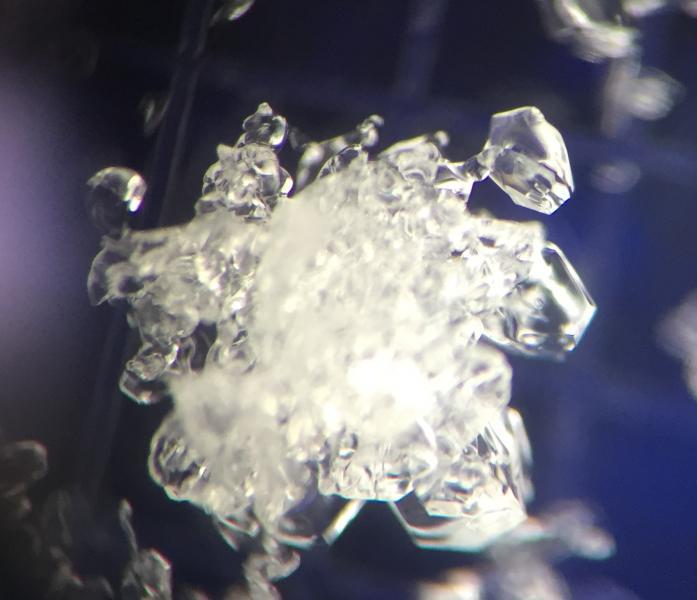Despite warm weather, the snowpack remains weak and faceted on the northern half of the compass. Facets throughout were dry. I was surprised how dry and weak they were, even in places where the snowpack got very wet as in the photo below.

There is plenty of weak, faceted snow to be found. On direct south aspects, it is either dirt or shallow, hard, refrozen snow. There will be no stability concerns in these area. On due north aspects, the snowpack has plenty of facets, both at the ground and several inches under the snow surface.

In between North and South aspects, it gets tricky. The snowpack is overall more variable that it was at the start of the week. On a SE aspect, there was a very hard ice crust, with about an inch of slightly faceted snow capped by a soft crust. The wind had scoured off these facets and the soft crust in places. This snowpack may not be a widespread set up; instead, the point is the variability of conditions and how thing will get tricky as more snow falls.

Found the graupel layer from November 20th that became faceted during the following days. I'm not sure of exactly what happened during this faceting event, but it is pretty cool and i decided to take some pictures. You can clearly seen the faceted grains attached to the graupel. I suspect these faceted grains grew as vapor was deposited onto the larger piece of graupel. The "neck" or the bond (top right side of the graupel pellet) between the faceted grain and the graupel pellet is interesting. Did this bond form during recent warm weather? Did it already exists? Hard to say, but what I can say is that these graupel pellets and the facets around them are soft and weak.







